In Île-de-France, serving hyper mobility
The Île-de-France rail network is one of the busiest in the world
As Europe's leading economic region, Île-de-France is also at the top of the podium in terms of use of the suburban rail network. The Île-de-France network is also characterised by its openness: different types of traffic (freight, daily and long-distance passengers, etc.) operate side by side on the same rail network.
To transform the network and adapt it to the challenges of a megalopolis of 12 million inhabitants, SNCF Réseau is carrying out an unprecedented volume of works. Our daily challenge is to keep passengers as mobile as possible.

The key challenge of network regeneration
The Île-de-France network is unique in that it is extremely dense, but also technologically heterogeneous and ageing. To regenerate it and restore all its capacities, we need to intervene by minimising our impact on services. Each year, we decide on "works capacities", the traffic we can interrupt, to balance the long timeframes of industry and the short timeframes of service.
The 5 Île-de-France rail routes
The Île-de-France network is organised into 5 routes, each linked to a major Parisian station. On these routes, different types of traffic coexist: freight trains, long-distance trains and everyday trains.
Paris-Est route
The Paris-Est route includes the RER E, line P, TER and Tram T4, as well as the main passenger and freight lines that cross its territory as far as Gare de l'Est.
What's next?
A little further west, with the RER E as far as Nanterre and more interconnections with new interchange stations for future lines 15 and 16 as part of the Grand Paris Express. And many other day-to-day improvements.
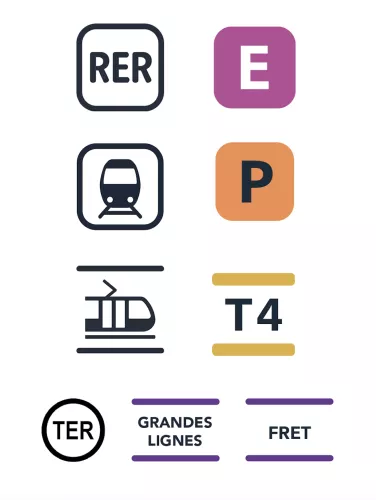
Paris-Ouest route
The Paris-Ouest route is characterised by high traffic density, serving lines L, A and J in particular. These lines provide links to major employment centres such as La Défense and Paris-Saint-Lazare station. It is also the main access route to Normandy for travellers and the ports of Rouen and Le Havre.
In the future, a new network will be put in place, with the extension of EOLE to Mantes, the Grand Paris line 15 West and the T13 Express. In the longer term, the new Paris-Normandy line (LNPN) project will further strengthen this infrastructure.
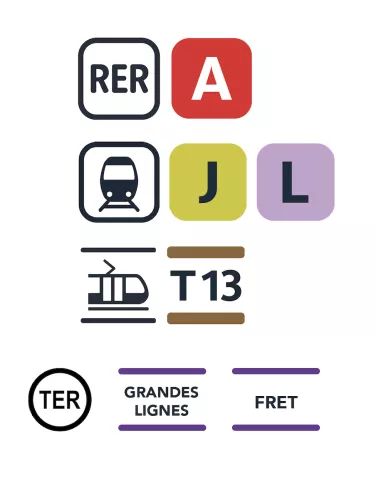
Paris-Nord route
The Paris-Nord route corresponds to the northern section of RER B, C and D, lines H and K, the "Paris radials" of TER Hauts-de-France, Tram T11 and the main passenger (including international traffic) and freight lines arriving at and departing from Gare du Nord.
The creation of the new link to Charles-de-Gaulle airport (the CDG Express project), and of new interchange stations for future lines 15, 16 and 17 as part of the Grand Paris Express, will profoundly change the mobility offer on this route.
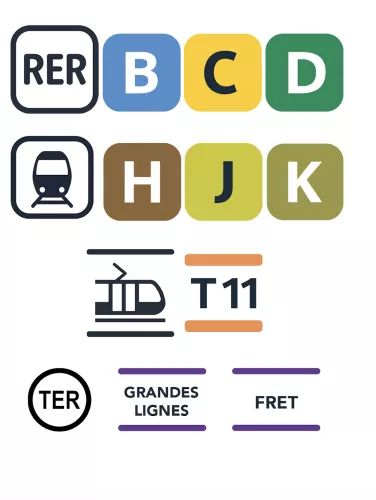
Paris-Sud-Ouest route
The Paris-Sud-Ouest route? These are lines C, N and U linked to the TER Centre Val-de-Loire and Normandie, as well as those of the main passenger (TGV Atlantique and Intercités) and freight lines that cross its territory as far as Paris-Montparnasse and Austerlitz stations .
A network tailored to future mobility needs is currently being developed: it will be more robust, more efficient, and will benefit from improved coverage thanks to the interconnections of lines 14 (Pont-de-Rungis), 15 (Issy-Vanves-Clamart) and 18 (Massy Palaiseau, Versailles-Chantiers) of the Grand Paris Express network.
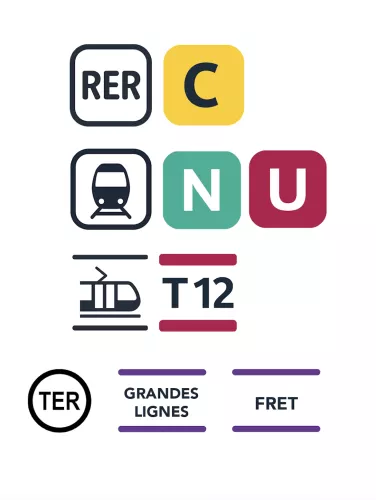
Paris-Sud-Est route
The Paris Sud-Est route brings together the RER D and R transilien lines. It is an essential pillar for daily travel in the Île-de-France region. What's more, thanks to the Gare de Lyon and Gare de Bercy, this route is a nerve centre for long-distance passenger and freight traffic.
With a significant increase in traffic forecast between 2030 and 2035 on this route, it is vital to plan and respond proactively to this increase in demand for mobility. The projects under development are designed to improve the robustness of the route and maintain performance in the context of changes to rolling stock and systems, as well as reducing congestion on the Gare de Lyon-Gare de Bercy complex.
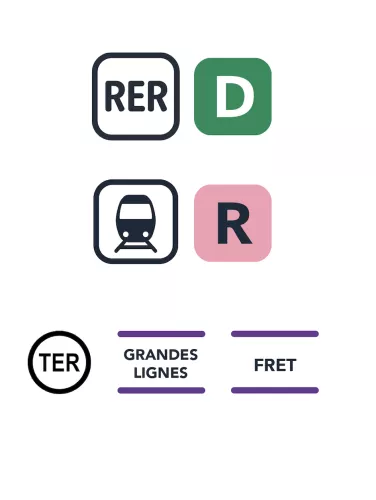
Join the great SNCF Réseau Île-de-France team
Joining our teams means working on large-scale projects that shape the region, such as the EOLE project, the introduction of new tram trains, works to adapt infrastructure to the arrival of new trains, or the renewal of catenaries, engineering structures, signalling, track or points, etc. In total, there are more than 180,000 operations a year awaiting you in the Île-de-France region.

